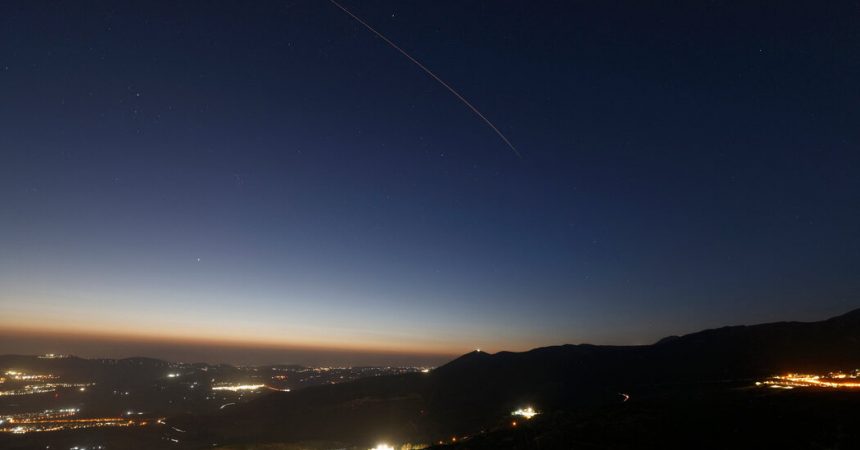The Lebanese militant group Hezbollah on Tuesday claimed that it had made its deepest attack into Israel since October, striking with aerial drones north of the city of Acre and setting off sirens across the country’s northern coastline.
The militant group, Iran’s most powerful regional proxy, has been engaged in escalating cross-border strikes with Israeli forces since the war in Gaza began more than six months ago. In the latest strike, it said it had launched a drone attack on an Israeli military barracks roughly 10 miles from the Lebanese border. The extent of any damage was not immediately clear.
The Israeli military said that it had “successfully intercepted” two aerial attacks off the northern coast but did not comment on Hezbollah’s claim that it had hit the military barracks.
Footage that circulated Tuesday on Hezbollah-affiliated Telegram channels, and geolocated by The New York Times, shows people on a beach in Acre looking up at the sky as sirens go off and an explosion is heard.
After the drone attack, at least two civilians, including a child, were killed in an Israeli strike on a house in the southern Lebanese town of Hanin, according to Lebanon’s state news agency. The Israeli military said that fighter jets had targeted “military structures” in the area where Hezbollah were operating, according to a statement.
The drone attack in Israel came after targeted killings by Israel of two Hezbollah fighters in southern Lebanon, both of whom the Israeli military claimed were involved in Hezbollah’s aerial operations. The killings overnight and on Tuesday were the latest in a string of assassinations of Hezbollah commanders and fighters, as the Lebanese militant group increasingly employs self-detonating drones to target Israeli military sites.
Last week, Hezbollah claimed responsibility for a drone and missile attack into northern Israel that left one soldier dead and 16 soldiers and two civilians injured, in one of the group’s most damaging attacks in Israel in recent months.
Hwaida Saad, Johnatan Reiss and Arijeta Lajka contributed reporting.






